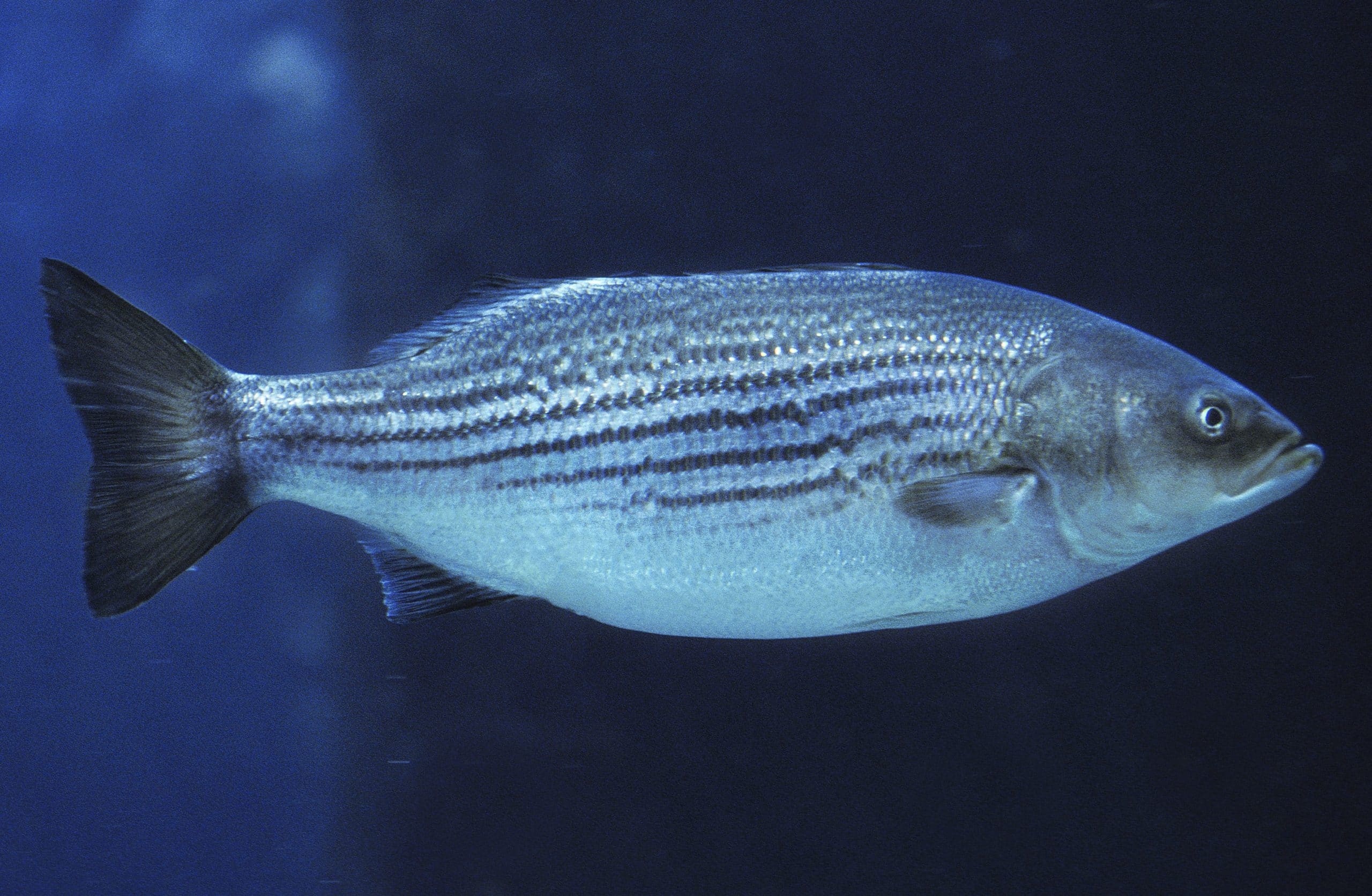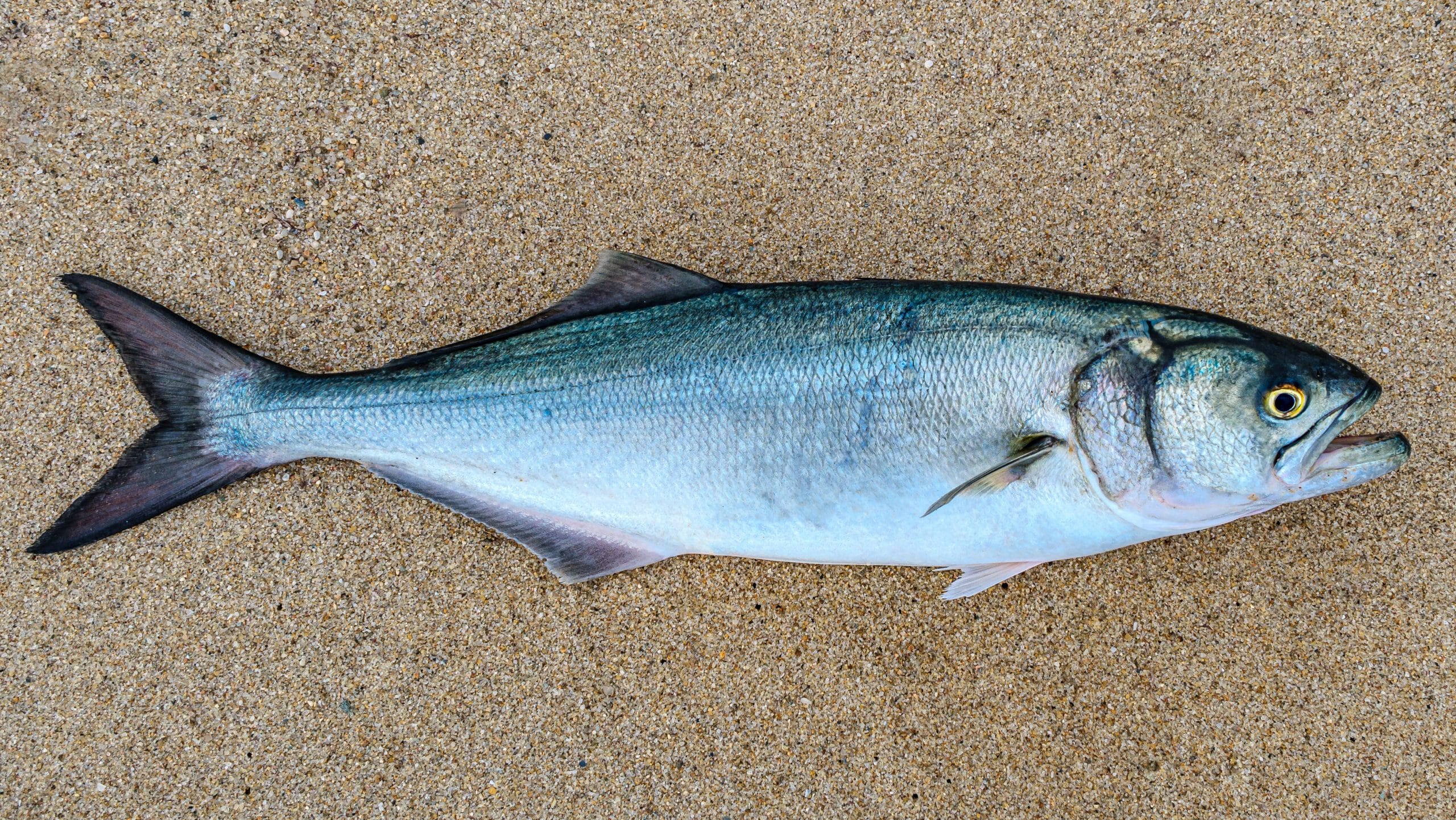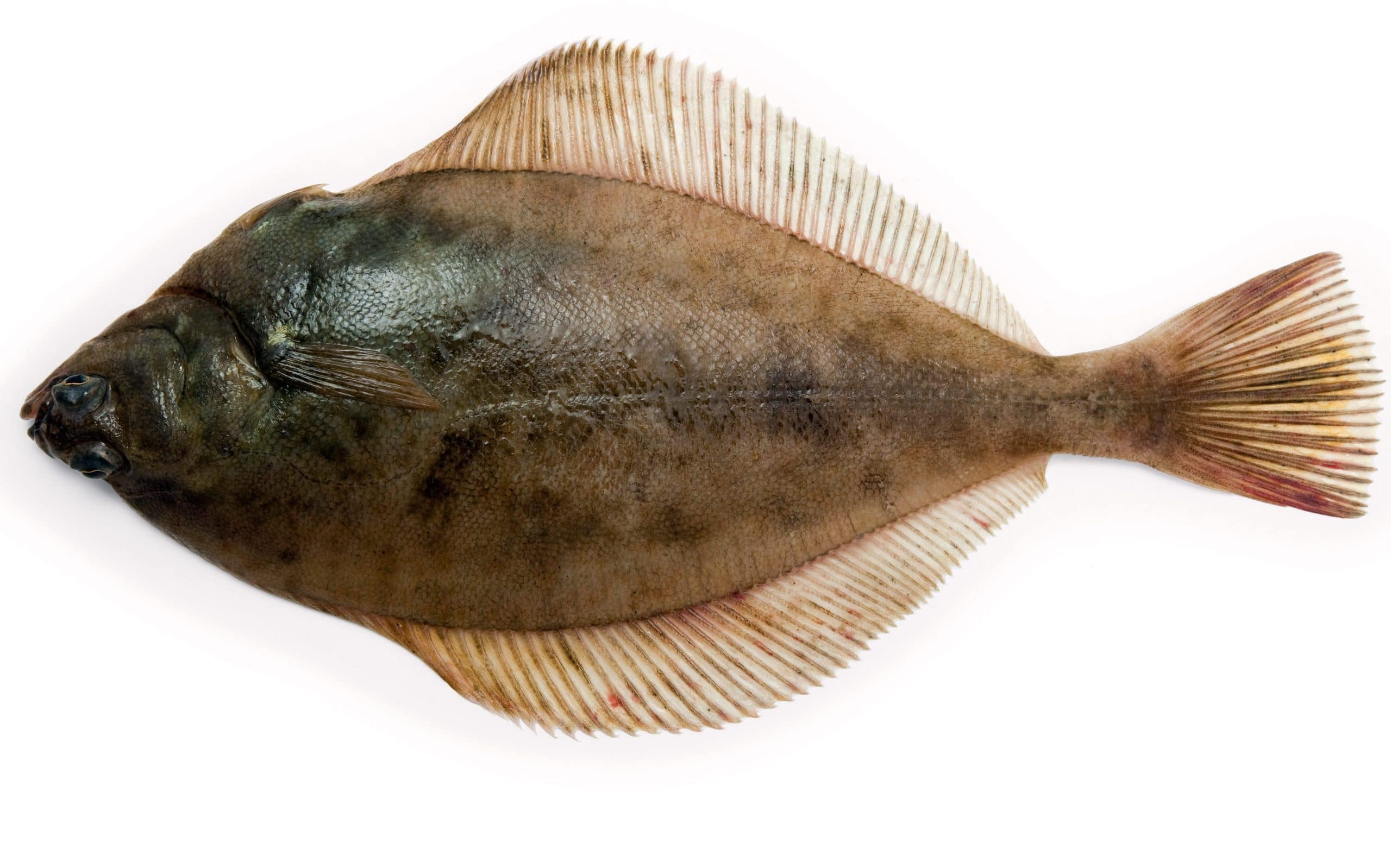There are a lot of different fish that feed near the shore. Here are the most popular surf fishing species you could reel in while while surf fishing (also known as beach fishing).
Striped Bass
Striped bass, or stripers as they are commonly known, can be found on both the east and west coasts of the United States where they feed in the tidal zone within easy reach of the shore angler. They are silvery green in color and have several black horizontal stripes running down their bodies, hence the nickname ‘stripers’.

The current world record catch for this species stands at over 81lb and was caught from a boat in Long Island Sound, off the coast of Westbrook, Connecticut but a fish of 30lb is considered to be a good catch.
Stripers can be targeted from the surf all year round, although spring and fall are generally the better times since they head into tidal freshwater to spawn and they run a lot closer to the shoreline making it easier for the angler to reach them.
Tips for catching striped bass
Although striped bass can be caught throughout the day, night-time, if your state regulations allow, is by far the best time to target them. Stripers are nocturnal hunters, but early morning and evening can also be productive times.
Bass can be caught with both bait and lures, although by far the best way to target them is with a live fish such as eel, herring, smelt or menhaden using the fish finder rig. Other good baits worth using are crabs, clams and sandworm. These fish can also be caught successfully with lures such as topwater poppers, diving crankbaits and various fish patterned soft plastics.
Bluefish
Bluefish is a strong and ferocious species that can be found along both the Gulf and Atlantic coastlines. Bluefish possess a spiky dorsal fin, forked tail and have blue-green coloration on the upper body which fades to white on the lower part and belly.

The best times to catch bluefish from the beach is either at dawn or dusk. They can be caught throughout the day although the bite slows down during full daylight. Bluefish is a schooling species and will work together in tidal rips and shallows rounding up baitfish and striking with speed and aggression.
Best bait and tackle for bluefish
The best baits for bluefish are small live fish such as menhaden, herring, mackerel and butterfish, but other baits such as shrimp, lobster and crabs are also particularly good.
A fun way to target this species is with light spinning tackle. A range of artificial lures can be used including spinners, crankbaits, bucktail jigs and shads, although the most exhilarating way to catch them is by using a topwater lure such as a popper. Bluefish are attracted by noise and commotion so using a lure like this can attract fish into striking.
Check out the Best Lures for Bluefish.
Bluefish have strong teeth so always use a fine wire leader as they can easily bite through 80lb fluorocarbon or monofilament.
Red Drum
The red drum, or red fish as it is commonly known, as the name suggests have a red coloration along their backs which fades into white on the belly. They also have a very distinguishable black spot at the base of their tails which is designed to confuse predators into thinking this is their eye, so they get attacked from the rear which helps them escape. They can be found in the Atlantic Ocean from Massachusetts down to Florida and into the Gulf of Mexico.

Although drum can grow to in excess of 90lb, most fish caught by the angler from the beach typically weigh between 3lb and 10lb. Young fish live and feed in estuaries, around the mouths of rivers and in shallow coastal waters until they reach the age of around three or four years when they head out for the open ocean.
The optimal time to target red drum is around an hour before high tide and in low light conditions such as dawn or dusk. This species can be found close to the shore over clean sand or eelgrass beds, so these are the areas to target. They also congregate around docks, jetties and breakwaters as these offer natural shelter from strong currents plus baitfish, which they feed on, can also be found in these areas.
Best bait for red drum
The best live bait for catching red drum is shrimp, but any small fish will generally be readily taken. Other baits such as clams, mussel and squid are also particularly good as these leave a good scent trail in the water.
Red drum are also commonly caught using artificial lures such as spoons, jigs and plugs. A small strip of bait such as squid can also be added to the hook of a spoon or jig to add extra appeal.
Weakfish
The weakfish is a member of the drum family. It has a dark brown coloration with a tint of green along the head and back with a silverish hue and dusky spots along the flanks. The weakfish can be found on the Atlantic coast from Novi Scotia right down to South East Florida but are more commonly found between New York and North Carolina.
Water temperature is critical when hunting this species. This fish can be caught on baits such as small, live anchovies or menhaden, bloodworm and crab.
Unlike a lot of other predatory fish who chase and crash into shoals of baitfish, the weakfish approaches its prey in a different manner. Once a baitfish is spotted, the weakfish will very slowly move towards it until it is close enough and then it will lunge with its mouth open.
Tips for catching weakfish
Weakfish generally bite the best at dawn and into the first hour of daylight with both bait and artificial lures such as small jigs, bucktails and spinners. Small soft plastic swimbaits mounted on a jig head and left to wash around in the current naturally are also very productive. This species is easily spooked so care should be taken when fishing in shallow and clear water.
Fluke
Summer flounder, often referred to as flukes, are found in the Atlantic Ocean, from Nova Scotia all the way down to Florida. They are most commonly found, though, from Cape Cod down to North Carolina. Flukes are members of the flatfish family and spend their entire lives living and feeding on the seabed.

They can change their skin color to suit the surrounding environment enabling them to blend in which keeps them hidden from predators. Flukes are ambush predators which means that they do not chase their prey but instead they hide and wait for a meal to pass by. They rely heavily on sight to feed rather than smell, so they are reluctant to eat during darkness and low light levels.
Fluke size
Flounder can grow to over 15lb in weight, but the average sized fish encountered by the surf angler will be between 2lb and 4lb. Fishing at distance is not required as these fish venture close to the shoreline to feed but keeping the bait on or close to the bottom is critical.
Best Tackle for Fluke
For bottom fishing use the fish finder rig and use a small live fish such as a crocker or minnow. Another good bait is chunks or strips of fish as well as various aquatic worms. Flounder can be a very shy, biting species so holding the rod and feeling for bites will be advantageous.
Artificial lures also work well if fished very slowly along the bottom. Flukes are very inquisitive so puffing the sand up with a jig head or weight can attract fish.
Pompano
The Pompano are a flat bodied, silvery fish, can have a yellowish tinge to their underside and a wide forked tail which makes them powerful swimmers. Although they can grow to over 8lb in weight, they very rarely get to over 4lb.

Pompano are associated with Florida surf fishing, but can be found all the way to Massachusetts and throughout the Gulf. These fish are a migrating species and move with the changing water temperatures, so weather will play a big part in locating them.
Pompano will run close to the shoreline in search of food during daylight hours as they are a sight feeding species. It is important to pick the right conditions to fish in as they do not like too much surf or murky water, just enough surf to disturb the sand is ideal.
Best bait for pompano
The best baits and method for catching this species are sand fleas, shrimp, fiddler crabs, clams and small strips of squid using a pompano rig just flicked out into the surf. They are ferocious and will hit the bait hard and make powerful runs in their battle for freedom. Pompano are also very predatory and will take small fish pattern lures and spinners.

Hello! My name is Tim and I’ve been fishing for over 30 years. I’ve learned a lot about fishing during that time and I love sharing that knowledge with others. I’m also a member of the International Game Fish Association (IGFA). Thanks for checking out the site!

